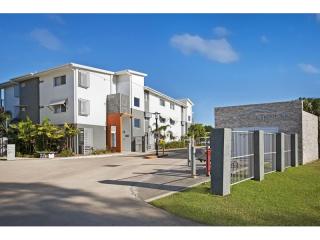What is bundling?
Bundling is the term used when property managers roll all of their management services into a single, ‘overall’ commission fee, rather than charging owners a separate amount or commission rate for each sub-service.
- For example, as a property manager, you would traditionally charge your owners for the below services, as dictated by your body corporate agreement:
- - Management fee: 12% of gross tariffs
- Marketing fee: 3% of gross tariffs
- - Merchant fees: 2% of gross tariffs
- - Housekeeping fees: $40/clean
- - Linen costs: $3/bed/booking
- - Guest amenities: $10/guest
- - Spring cleaning: $250/year
- - Foxtel: $35/month
- - PABX: $30/month
Normally, these charges would be listed as individual items on your owners’ statements at months’ end. In contrast, under a ‘bundled’ revenue structure, you may charge a ‘Property Management Services fee’ of 40-50% of gross tariffs for the month as payment for all agreed services. This fee would be a single line item charged to your owners & would be expected to cover all of your associated costs in carrying-out your required duties.
The extent to which your managerial services are bundled is dependent on the contract you hold with your owners. As long as all parties agree, you can ‘bundle’ or ‘itemise’ any of your services. E.g. you may choose to bundle your management, marketing and merchant fees, while keeping all other costs individually itemised on your owners’ statements.
How would I manage my accounts and owner statements under a bundled structure?
Your business should have management software with an in-built trust accounting functionality. Most trust-accounting systems will allow you to set-up custom tariffs which can cater for any bundled or non-bundled revenue structure. The most powerful systems however will also provide you with the tools necessary to forecast your future revenue and profit accurately. Note that these forecasts will be more reliable if you don’t have a bundled revenue structure, but we’ll talk about that more later on.
When and why was bundling introduced?
Deregulation of commission fees
Deregulation always opens up new opportunities within an industry, and we have certainly seen this within the accommodation industry in recent years. The Property Occupations Act (POA) was introduced at the end of 2014, effectively deregulating commission structures by removing commission caps and revoking agent disclosure requirements[i]. While bundling has been around for a very long time, the POA has opened the flood gate for what charges can be included in the ‘bundle’.
The opportunity to sell new products and services
A property manager’s decision to transition from their traditional revenue structure to a ‘bundled’ structure also holds other added benefits and opportunities for industry suppliers. Firstly, a great deal of time and money goes into the transition process (as all owners’ agreements need to be re-written & re-signed). Secondly, there is scope for new specialised products and/or services which target ‘bundled’ businesses.
Understandably, these suppliers seek to make the most of these opportunities and do what they can to lead the industry in the same direction.
What are the main benefits?
Surviving the regulation of merchant fees
Another regulatory change the industry has recently withstood, was the ACCC’s broadening of the ‘merchant fee ban’ to include small to medium sized businesses. From the 1st September 2017, all businesses operating within Australia have been banned from collecting payment surcharges which are in excess of the transaction costs they incur[ii].
Simply put, the ban is intended to prevent businesses from profiting from merchant fees. Unfortunately, anyone who has ever owned an Eftpos machine knows that accurately passing the costs onto your customers can be somewhat challenging, particularly when your financial provider charges you incrementally based on the number and value of transactions you complete during the month.
Bundling can potentially ease the risk associated with arbitrarily assigning merchant commission fees to your owners. That is, if you charge a ‘property management services fee’ of 20% which includes your management services, marketing activities and merchant fees, you don’t have to explicitly state what portion of that 20% is attributed to covering your Eftpos costs.
Owner-manager relationships could improve
As Tony Rossiter from Holmans Chartered Accountants says, “Separate charges are replaced with one fee, making it far simpler for your Unit Owners to understand, while giving them comfort that you are only getting paid when they are making money.”[iii] By bundling your services into a single commission fee, you’re essentially going into partnership with your owners. You’re sharing in their downs and their ups, and effectively transferring a portion of the seasonal effects they would normally feel, to your own business.
If your owners have previously looked at month end statements during the low season and complained about you ripping them off (because a high proportion of the guest tariffs collected are required to cover your fixed costs), this will no longer be the case. Your owners will get more in low seasons and less in the high seasons. Contrastingly, you as the property manager will now feel more of the seasonal effects and will need to carefully manage your cash flow.
Increased revenue during peak seasons
As discussed in the ‘partnership’ notion above, your business is likely to receive more revenue in peak seasons and less in low seasons. Having a higher commission rate has great financial benefits when your property is accommodating more guests and collecting increased tariffs. This means there is greater incentive for you to optimise your average daily rate and occupancy levels.
As a property manager operating under a ‘bundled’ agreement, you would be rewarded more substantially for any efforts that you make to incrementally increase the tariffs you collect on behalf of your owners.
What are the main consequences?
Greater risk for your business
As previously stated, by replacing your fixed cost fees (such as housekeeping/Foxtel/PABX/linen etc.) with a flat commission fee, you are effectively transferring some of your owners’ financial investment risk back into your own management rights business. If the market suddenly takes a downturn and occupancy rates fall, your revenue could potentially drop below what it costs you to carry out your management services.
Careful cash flow management throughout all seasons will therefore be more important than ever, to prevent your business suffering a cash shortage in low seasons and tougher market conditions.
Less tolerance for price drops, occupancy drops and stronger competitive conditions
The ACCC has recently announced it will approve the merger between accommodation giants Mantra and Accor, despite it resulting in the duo possessing “a large number of properties in some areas, particularly in certain holiday destinations in Queensland.”[iv] With this on the horizon, small management rights operators and accommodation suppliers need to be mindful of the potential for increased competitiveness and stronger financial pressure on the local market. If these chains decide to drop their prices, you need to be aware of how susceptible your business will be.
Periods of tougher competition generally require greater marketing spend, and may require you to fight back by dropping your property’s own rates. Unfortunately, being under a bundled agreement might hinder your ability to withstand these tougher conditions due to the increased cash flow risks this scenario presents.
Less transparency around your income & less reliable forecasts
A powerful PMS will give you a complete breakdown of how much revenue you receive for each of your services within every guest tariff that you collect. For example, a guest’s one night stay which delivered a $150 tariff would include an $18 management fee, $4.50 marketing fee, $3 merchant fee, $53 for housekeeping, linen and amenities plus a proportion of your monthly Foxtel & PABX charges ($2.17) (based on the typical charges listed above).
At months’ end, as long as you’re keeping account of your expenses, you are able to analyse which services were most and least profitable for your business and why. Furthermore, you have the ability to accurately forecast future profit based on expected occupancy rates and historic profit margins for each service.
In contrast, when your services are bundled into a single commission rate, you lose transparency around the profitability of each of your managerial services, and your profit forecasts may not be as reliable.
Confusing accounting consequences of having a combination of bundled & non-bundled agreements
Bundling is truly only operationally viable when ALL owners agree to the new commission structure. The tariff names created in your PMS would theoretically allow you to account for differing owner agreements between rooms, however you may encounter confusing issues when you need to transfer guests between these rooms. E.g. what happens when a guest stays in a unit that is under a ‘bundled’ agreement, and then is moved (on their request or because of an overbooking issue) to a unit that is not bundled?
With payment having already been made upon arrival, there is a good possibility that disbursements to owners and managers alike may have ‘already’ been made. This results in additional workload for the manager in calculating the revised split of income and adjusting disbursements accordingly.
Greater risk of your owners ‘shopping around’ for a better commission rate during high seasons
While a ‘bundled’ agreement has many benefits for your owners in low seasons, they may be put off this agreement after receiving their first ‘high season’ month end statement from you, which shows a much higher proportion of guest tariffs being withheld. Furthermore, some of your owners will undoubtedly only see a number when it comes to the commission rate you charge them. If they choose to ‘shop around’, most other external agencies will appear much cheaper because their advertised lower commission rate does not include all the other fixed costs that your ‘bundled rate does. We all know customers are quick to forget what they are actually receiving for their money and often try to compare apples with oranges.
Other things you need to consider before making a decision for your business
Past performance is not indicative of future results
There are a number of property managers in the industry who have made the switch to ‘bundled’ agreements in the past year and are boasting about the increased revenues they have achieved.
This is fantastic if it has worked for their properties, however before making such important business strategy and investment decisions you need to take into account the nuances specific to your own property.
The accommodation industry in Queensland as a whole, has experienced favourable conditions over the past 1-2 years, with slightly higher than normal demand. What you should consider is whether your property would have received more or less revenue over the past few years if you had switched to bundled agreements. Then, decide whether the added financial benefit from bundling (if any) would have compensated you for both the cost of re-writing all of your owners’ contracts and the increased financial risk your business would now face.
Analyse your new tolerance for market movements
You should also analyse your vulnerability to price drops, low rates of occupancy and the possible downsizing of your letting pool. Under a bundled structure, calculate what effect a 5% drop in occupancy rates for each month might have on your net profit. Then, do the same for a 5% drop in your average daily rates. Lastly, because these two events are rarely mutually exclusive, consider a situation where both your occupancy rate and ADR decrease at the same time. Unfortunately, when these metrics fall together, the impact is compounded and a smaller decrease can significantly impact your bottom line. You may find that a concurrent drop of only 2% is enough to put your business into the ‘red’.
One size does not fit all & one agreement does not necessarily fit all
Not all ‘bundles’ are the same. If you were to switch to ‘bundled’ agreements, it is up to you to decide which arrangement of ‘bundled’ and ‘itemised’ fees works best for your business and your owners. It is worth noting that it might help to lessen your risk by only including your variable fees in the bundle (i.e. management, marketing and merchant fees). Keeping your current fixed fees (such as Foxtel, PABX, linen etc.) ‘itemised’ and charging your owners consistent amounts for these each month, could help to minimise the additional seasonal risks that you take on when switching your agreements over.
Unspent marketing fees & the value of your management rights business
Management rights businesses are valued on a multiple of their annual net profit (usually between 3.5 - 6.0 times a property’s annual net profit). For some time now, unspent marketing fees have been included as owners’ money, rather than that of the business. As such, the amount that is unspent is subtracted from the annual net profit before valuation occurs. For example, if your business has recorded $80,000 annual net profit over the last 3 years you might assume it could be valued at $360,000 (x4.5). However, if you’ve failed to spend $20,000 of your marketing budget each year, this would be subtracted from your ‘net profit’ before multiplication, resulting in a valuation of only $270,000.
If you have ‘bundled’ your marketing fees in with your management fees, there is no way to explicitly identify how much you’ve collected for marketing. The potential purchaser will then be unable to determine how much of your marketing money is unspent and appearing as your income, and how much of your business’s net profits is actually your owners’ money.
Consequently, buyers conducting due diligence now apply a general figure for what they believe you would have collected in marketing fees throughout the year. There can obviously be quite a debate about the appropriate figure, because a ‘marketing surplus’ will affect the sale value of the business by a multiple of 3.5 to 6.5.
Over time however, the general consensus seems to have settled on a figure of between $1000 and $2000 per unit per year. The buyer and their advisors will then make a judgement call in regard to this, taking into consideration specific details surrounding your property and the market conditions it is subject to (largely competition).
So, if you’re currently spending over or under this arbitrary amount of $1000-$2000, it will either work in your favour or devalue the sale price of your business quite significantly.
What’s the verdict – to bundle or not to bundle?
Bundling undoubtedly works for some, but will never work for all. Under ‘bundling’ agreements, your property will face greater risk and be affected by seasonal conditions throughout the year. Your business will also lose transparency surrounding the profitability of your sub-services. The reliability of your profit forecasts may also be damaged, ensuring the need to carefully manage your cash flow to prevent cash shortages in low seasons. In saying this, on the flip side you may also achieve much higher returns during peak seasons.
All in all, your investment and strategic decisions really do depend on your property and your adversity/tolerance to risk.


















